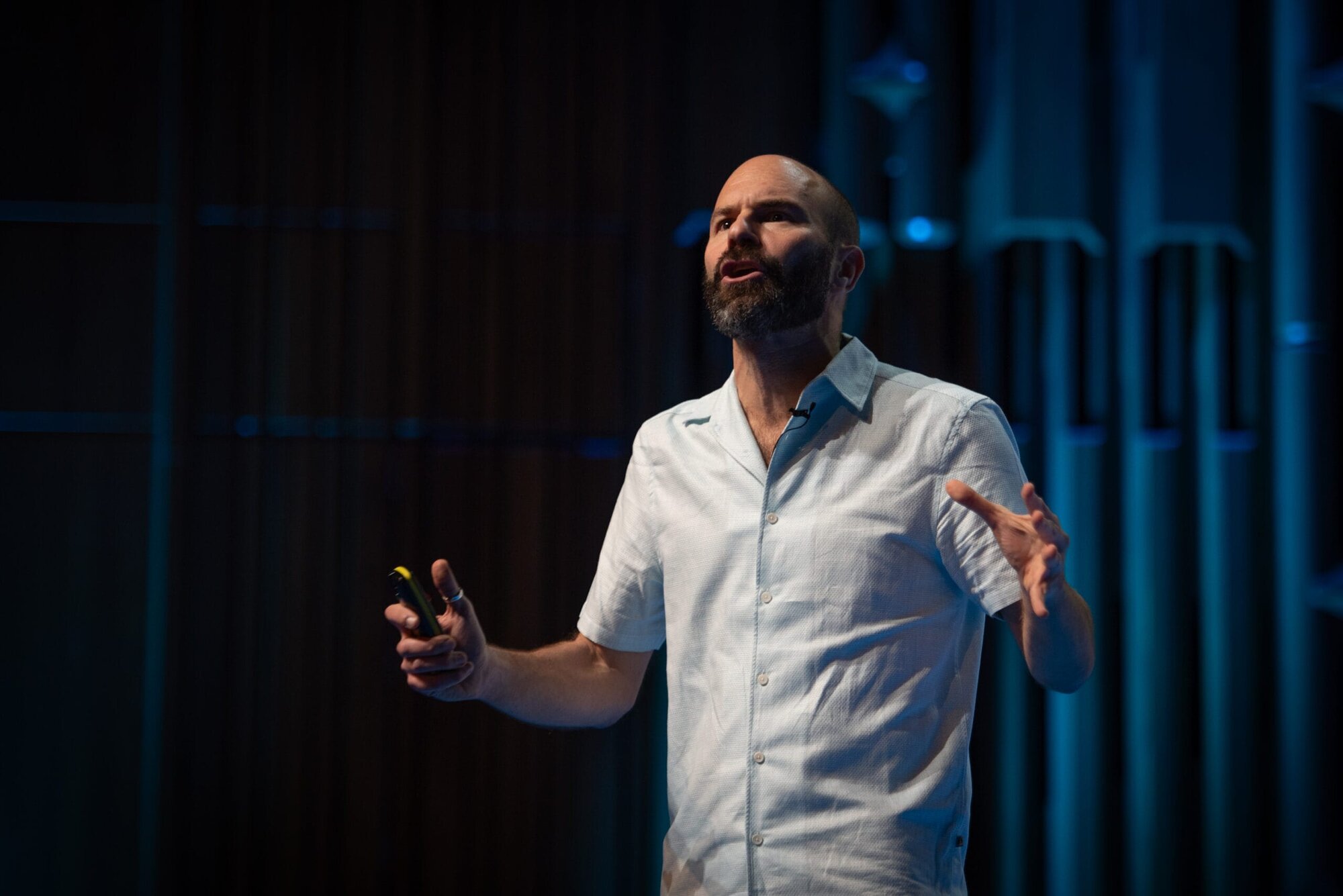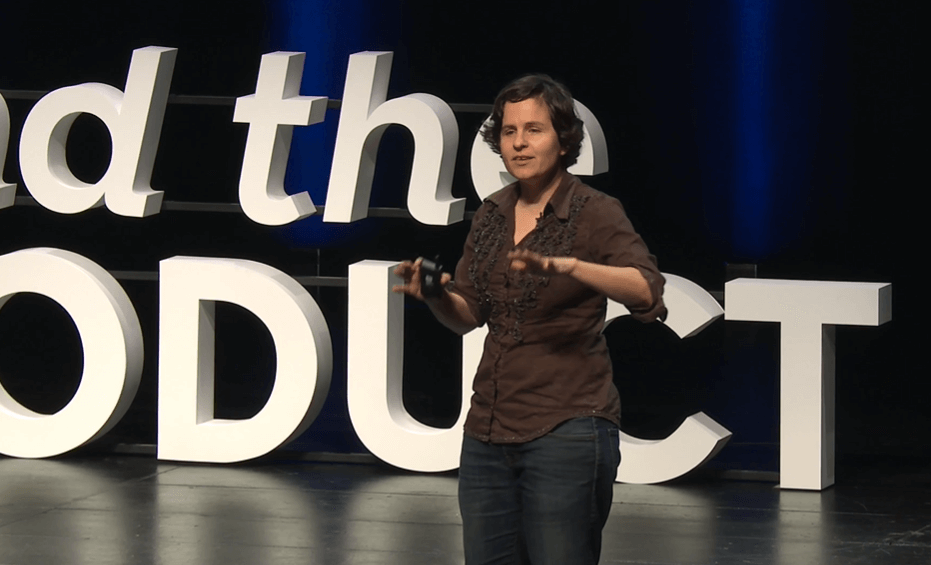Maybe you work somewhere where user research is done by a specialist team, maybe you’re new to product management, maybe you're looking into a possible new product, maybe your sales people are very protective of their contacts. There are several reasons why a product manager might be a step or two removed from direct contact with customers.
Of course, product managers need to speak to customers. And if you’ve never done this then it can seem a bit overwhelming. But it doesn’t have to be. Here’s some advice on crafting the right questions to ask.
Start at the end
For Merissa Silk, Senior Staff Product Manager at identity verification platform Onfido, thinking about the result you want to achieve is a great place to start. This doesn’t mean starting with a possible solution, which should always be avoided, rather it means thinking about learning objectives. She says: “I always suggest that we start at the end. Ask ‘what are we trying to learn? What do we need to achieve with this research? And how much confidence do we need to have in order to be able to make decisions?’.
You can then work backwards from the learning objectives to decide what method is the best to help you to arrive at them. Whether it’s a survey, qualitative research, usability testing, or card sorting, working backwards in this way can help you to pick the right approach.
Merissa gives an example from earlier in her career when she worked for a fintech company. She wanted to understand how someone might interact with their finances, if at all, during the course of a day. She recruited about a dozen customers with different profiles, brought them together, and asked them to journey-map their day and then overlay the times that they interacted with their money. Then in a second round of interviews, she looked at where, during the day, the company could have helped them to interact more productively with their finances. “We got some incredible findings. And my team thought that I must have done something like this before. But no, I just thought about how I would get the learnings I needed and I adapted Jeff Patton’s user story mapping that I knew about from a different area of product management.”
Craft a script in advance
Take the time to rehearse and modify your script. “Take the time to play with different versions of an interview script, and get a second opinion on it. Find people in the product community who can review the script with you and see if they have any other thoughts,” says Emily Tate, Managing Director at Mind the Product. Merissa says: “I like to write a script, and then test the script with people around the office to just make sure that I’m not going down a train of thought to match my own hypotheses. And to make sure that I don't get too many yes or no questions.”
Ask open questions
Open questions are the way to avoid yes or no answers and get your customers to open up to you. An open question is phrased as a statement which requires a longer response than just yes or no. This blog post from Hotjar showcases some open and closed versions of the same question. For example, “would you recommend our product?” is a closed question, whereas “what are the main reasons you chose our product?” is the open version of the same question.
Avoid leading questions
It’s very important to guard against bias when you’re interviewing customers and to avoid questions which might take your customer down a road you subconsciously lead them. This talk by Cindy Alvarez from #mtpcon San Francisco, Cognitive biases and the questions you shouldn’t be asking, is a useful run-through of bias and how to reduce it by asking the right sort of questions.
This ProductTank talk, Getting the most from your user research from former MTP Director of Training Products Rosemary King also looks at reasons your user research might not be effective. These include the mistakes and excuses companies all use at one time or another and Rosemary sets out some tips and solutions to deal with these situations.
Stay away from the future
Try not to ask what someone would like to see because people tend to be very bad at predicting how they would do things, says Merissa. “It's always better to ask how you do something now rather than how you would want to do it in the future. Rather than ask ‘how much would you pay for this, ask ‘how much do you think it costs your business to solve this problem today?’.”
Be clear about your terminology
Product management is full of jargon. Companies often have their own private language that may be impenetrable to someone from the outside. Do bear this in mind, and don’t assume that your customer understands your terminology, just because you know what you mean. Says Merissa: “I’ve found people who are not so experienced can use internal language and terminology in customer interviews, and that can cause confusion. And in my previous job, I did some research with renewable energy project management experts. When I did interviews with them, sometimes I would have to make sure that we were all talking about the same thing.”
Take an experience with you
Ronke Majekodunmi, Director of Product at Promevo, says she has one constant rule for customer interviews – take an experience with you. “We always bring a prototype, a mockup, a wireframe, it doesn't have to be a perfect product,” she says, “because it changes the conversation. You are taking the customer from the world that they are in right now to the world that is possible. You're transforming them. And when you transform them, they become engaged and they will then align with you.” She finds it invaluable for getting to an understanding of the full end-to-end of what a customer is trying to do.
Ronke says she starts interviews by understanding a customer’s day-to-day work. She asks about the numbers of people logged into the product, how much time they spend logged on, when they log on, their jobs, what they’re trying to achieve and so on. Then she shows her experience or prototype: “This makes them align with you. It may not be perfect, but they align with you and talk to you about what it's missing. And if they become aligned, they can be inspired. So they're not going to go to your competitor, because they've already seen what you're planning to build.” Even if she’s only doing early-stage discovery, Ronke doesn’t like to go into an interview empty-handed because having something to show “changes the conversation”.
Take someone with you
You need to be actively listening and figuring out how to ask the next question, and you can’t do that if you’re taking notes, says Emily. You also want to be able simply to listen and understand rather than give the impression that you’re validating any answers. She also recommends that whoever asks the questions should present themselves as an outsider – not someone who is there to solve customer problems, but someone who is only there to listen and collect honest feedback. As she points out, people don’t like to tell you your baby’s ugly, so presenting yourself as an outsider gives them permission to say what they really think.
Ronke says that she likes to take a number of people into an interview with her – ideally a designer, a researcher, and a tech lead. She uses design to drive the conversation, researchers to understand the psychology of what she’s trying to achieve, and having a tech lead helps with buy-in further down the road.
Finally, just remember that interviewing customers doesn’t come easily to everyone. Practise and you will get better and more confident. However, as Merissa points out: “From my perspective, it doesn't actually matter that much who asks the questions in front of the customer. It just needs to be someone who feels comfortable and confident to do so.” What is important is that a team of people can work together to craft those questions in the best possible way.







